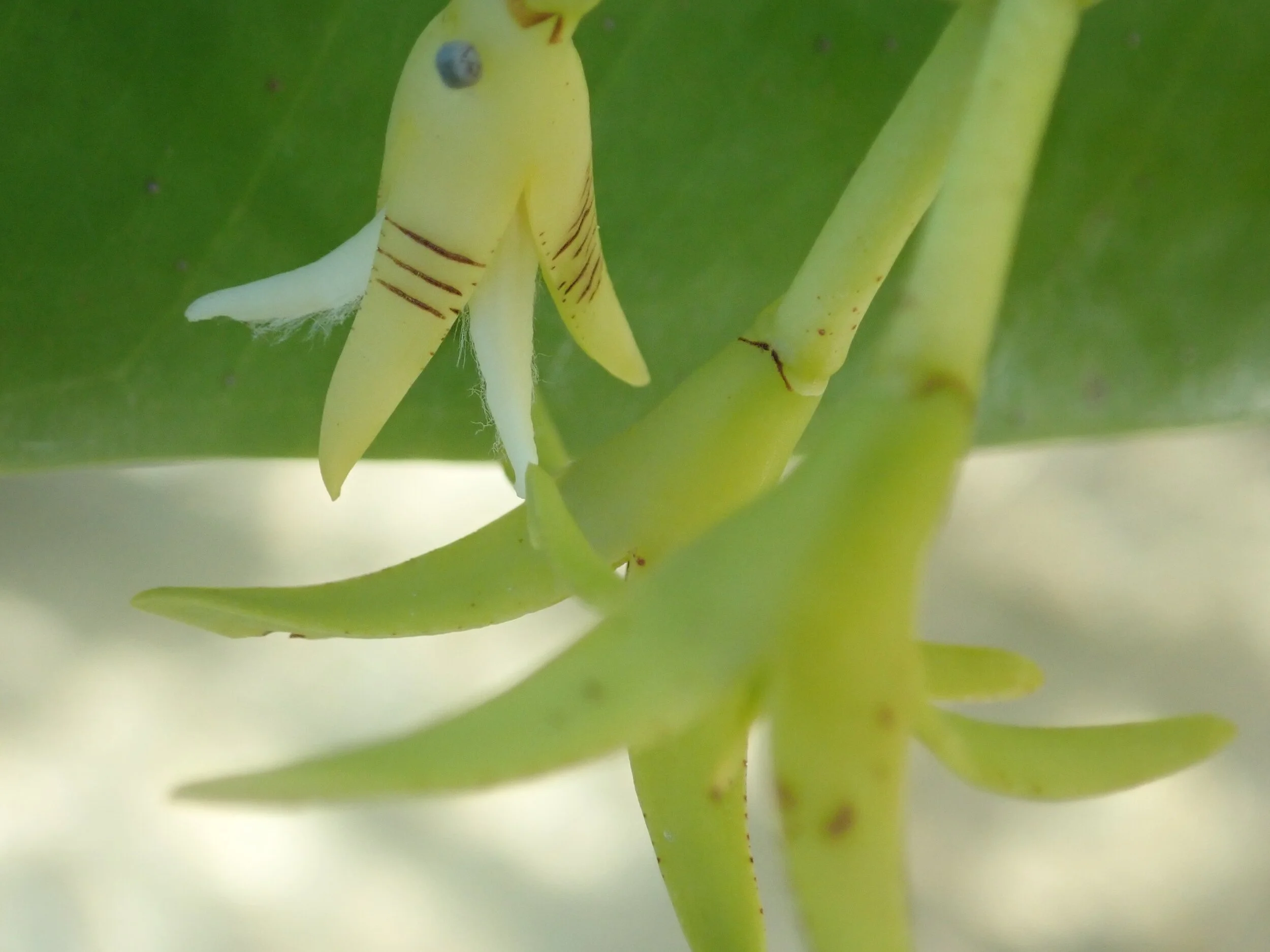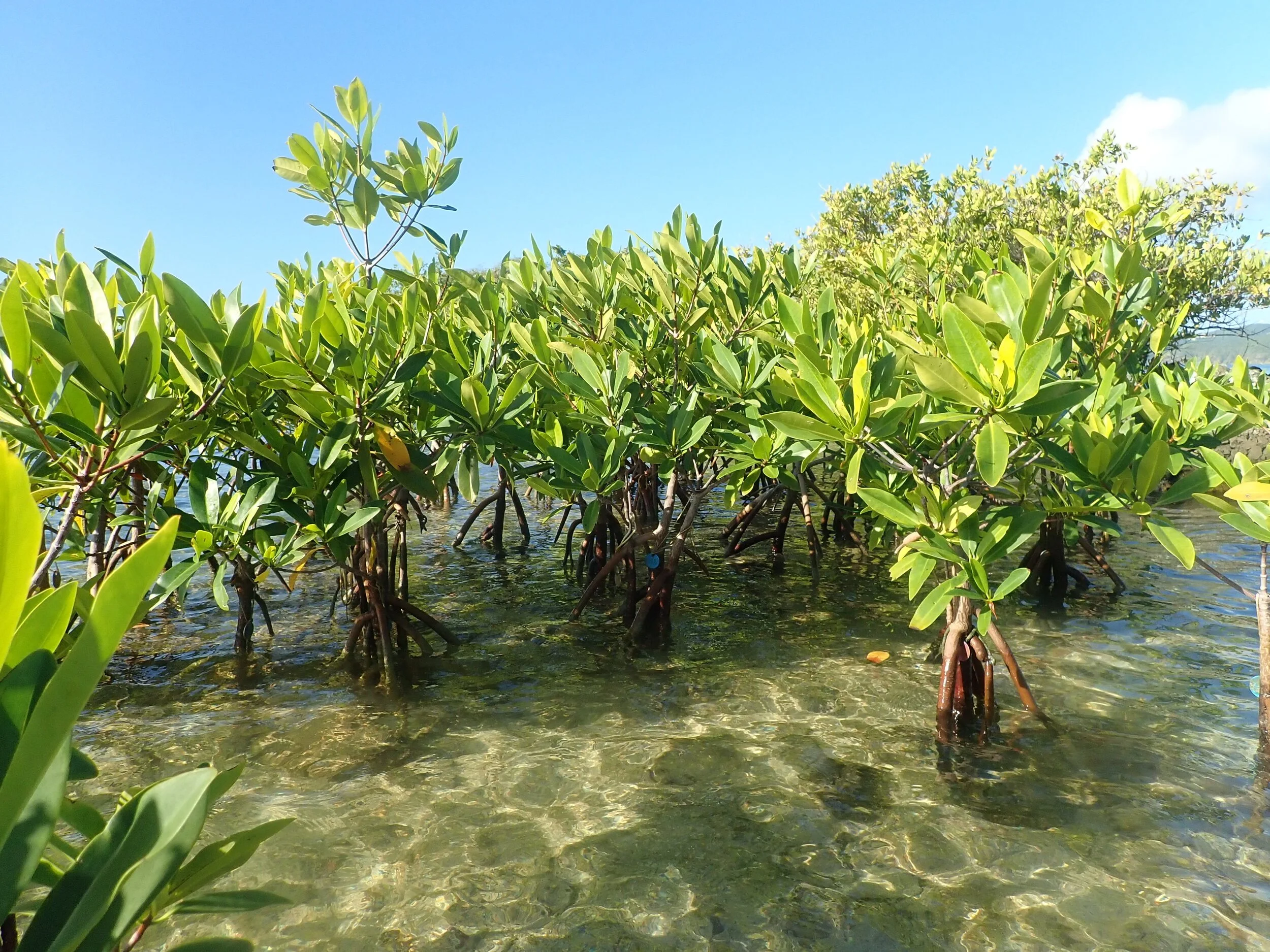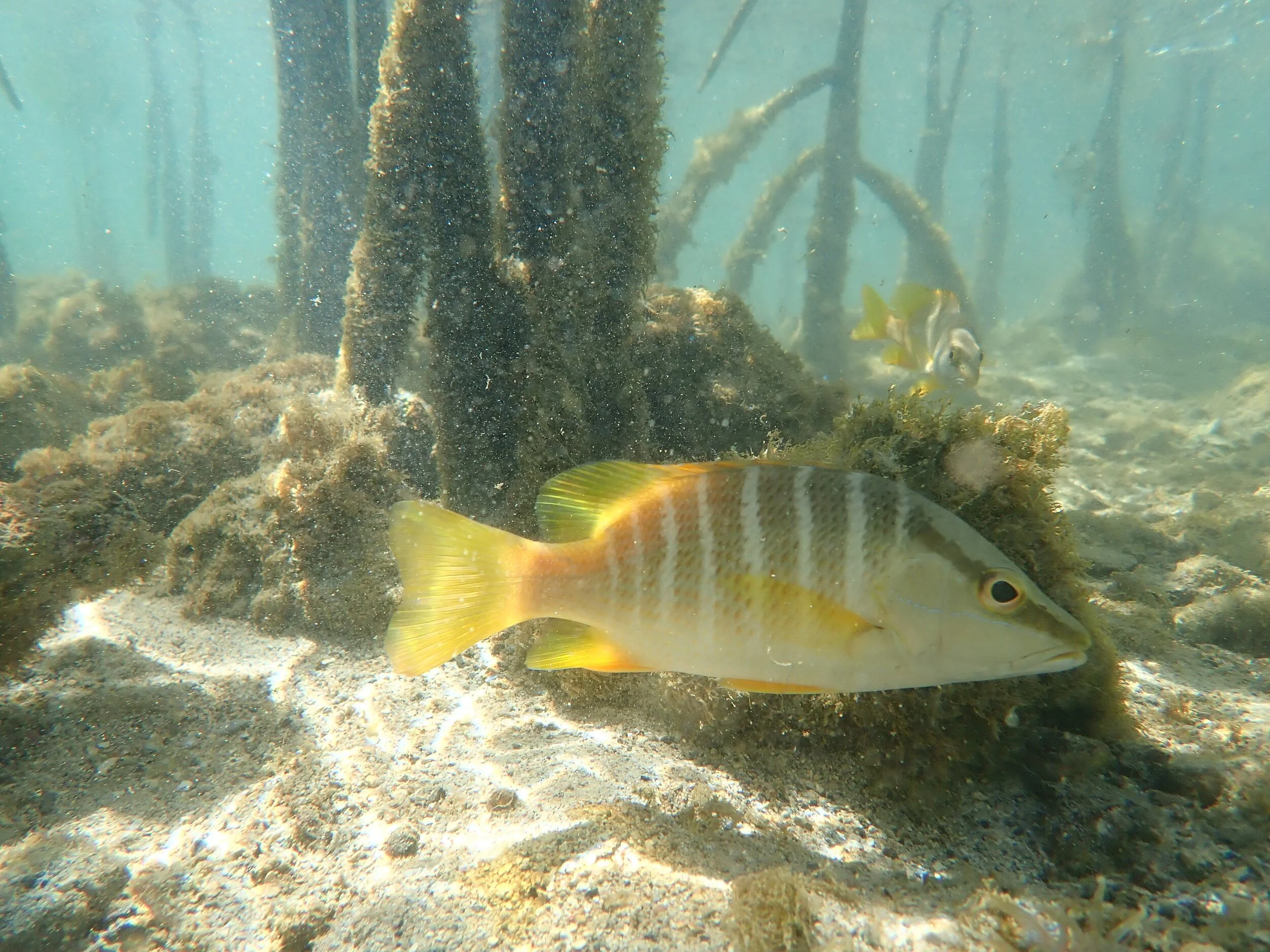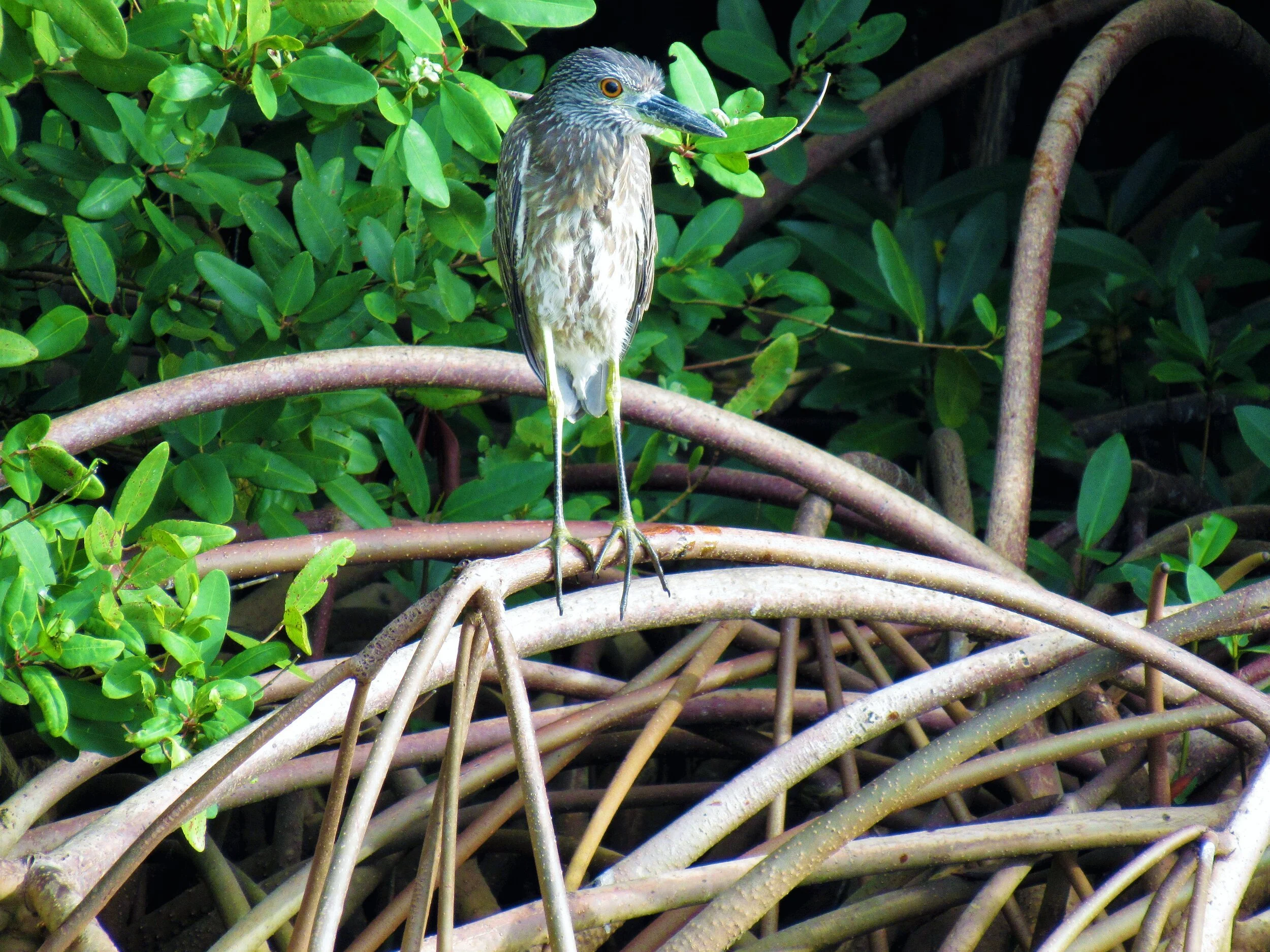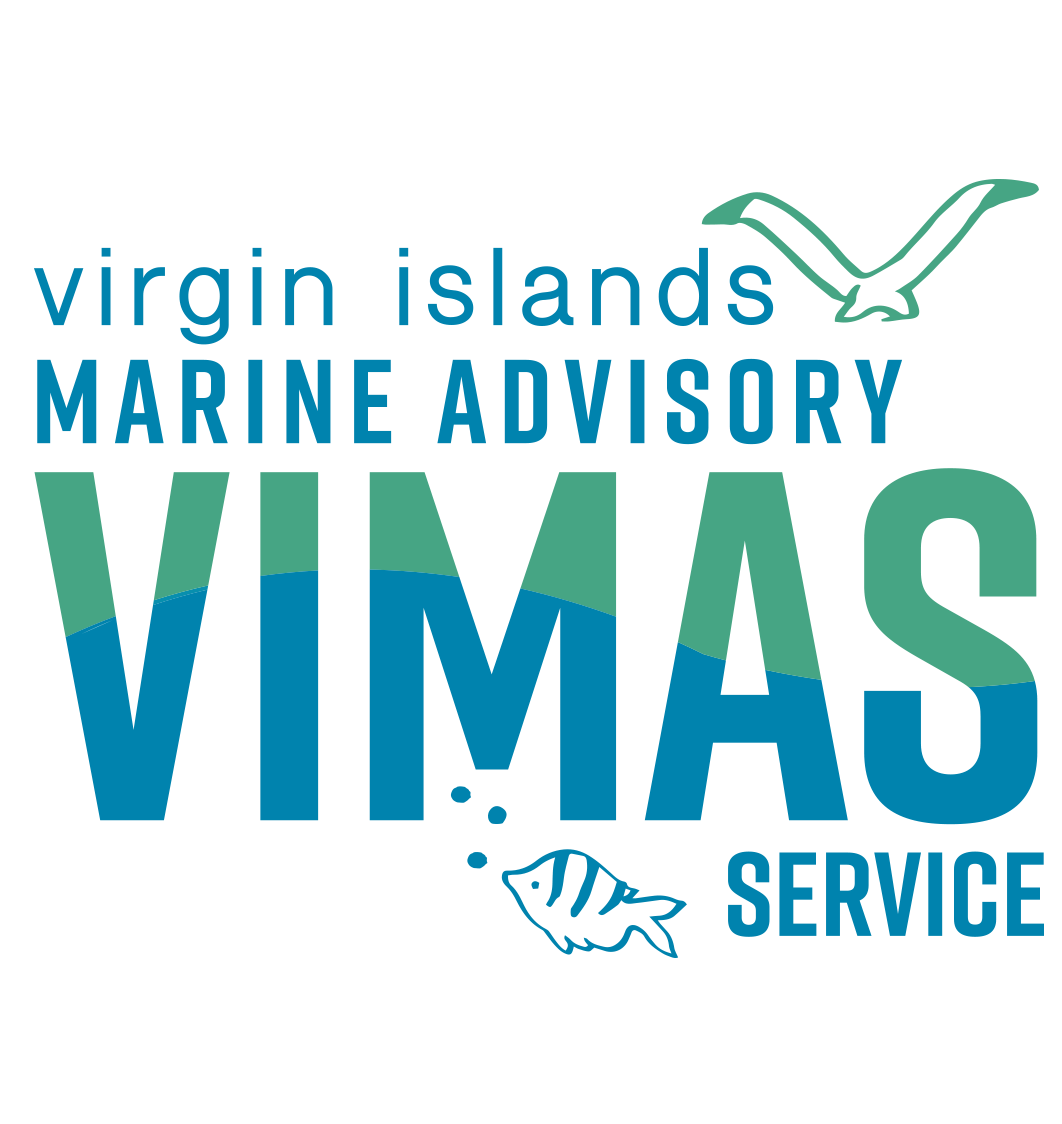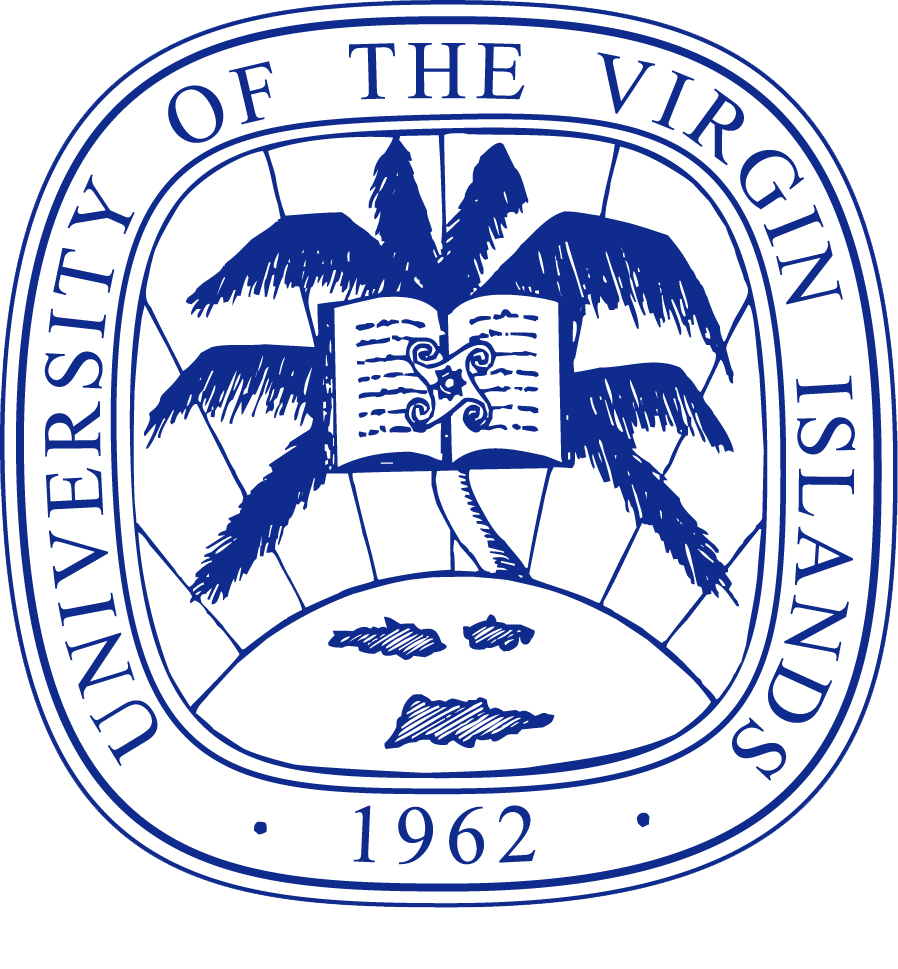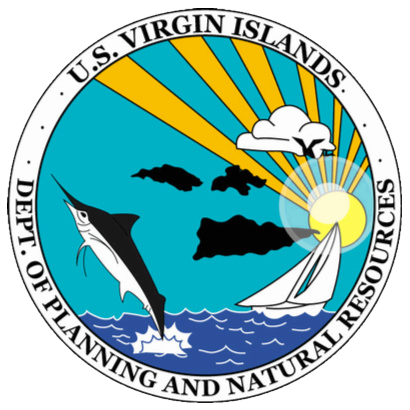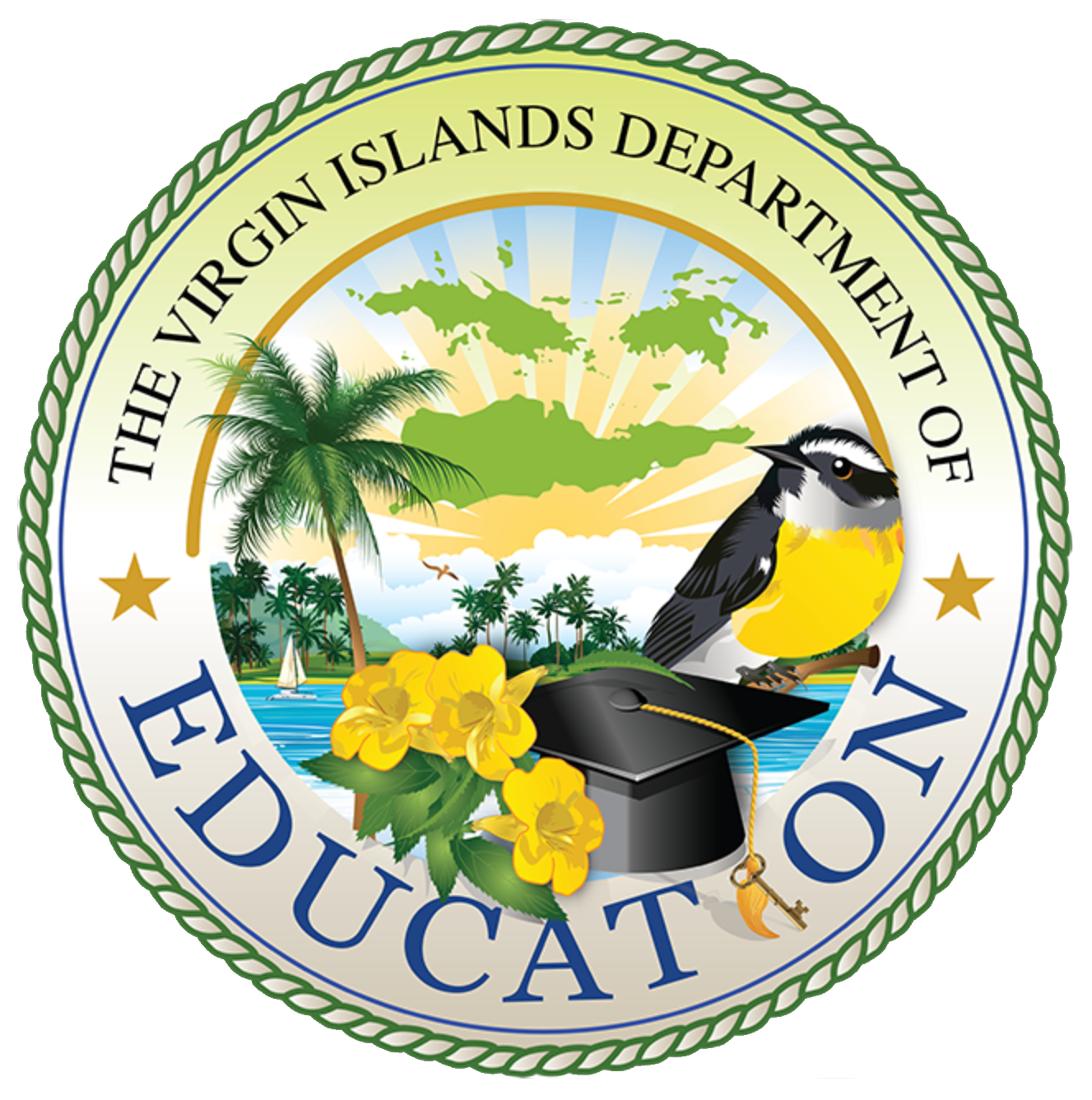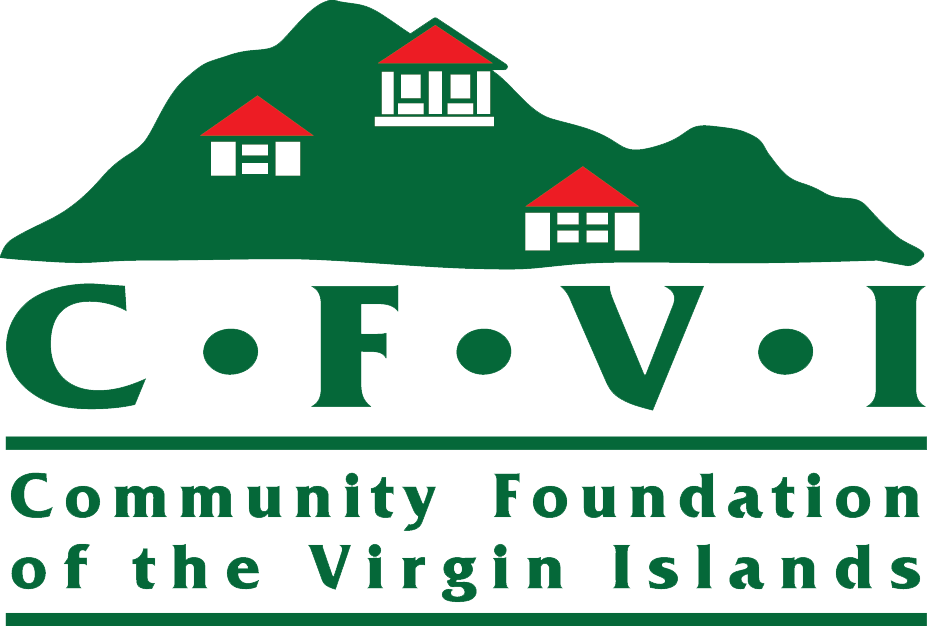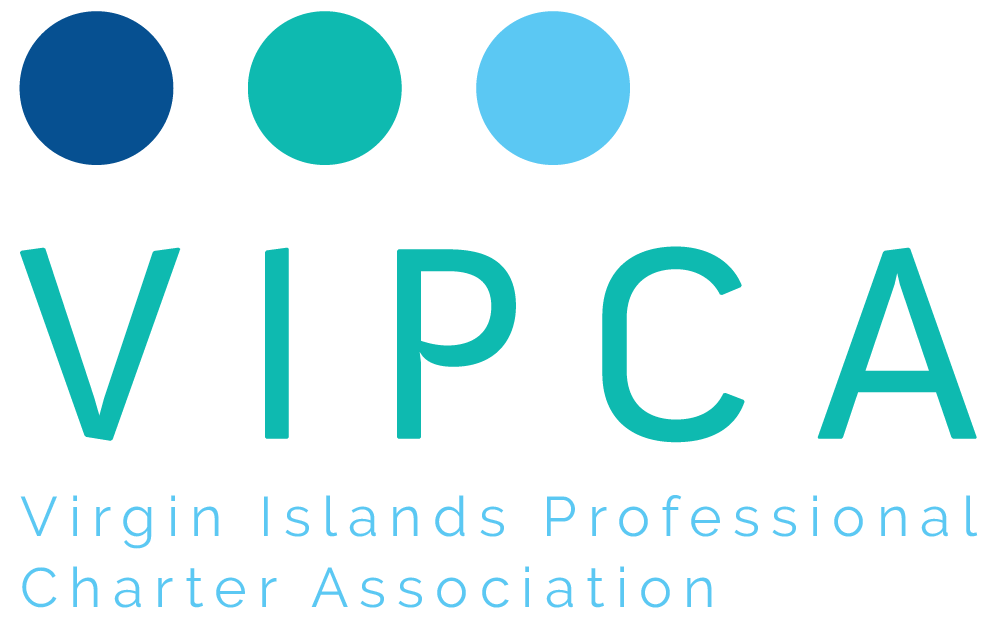Mangroves of the USVI
A 360˚ Virtual Tour
As we navigate from the upland forests and other terrestrial habitats, we make our way into the bridge that helps to connect both the marine and terrestrial environments. Mangroves are trees that have unique adaptations that enable them to thrive in salt water environments where most other plants would not be able to. In the United States Virgin Islands (USVI), there are three main species of mangroves; these include the red mangrove (Rhizophora mangle), the black mangrove (Avicennia germinans), and the white mangrove (Laguncularia racemosa). Of the three species, the red mangrove provides many of the ecological services that mangroves are attributed; these include: 1) Providing habitat for juvenile marine animals, 2) Buffering our coastlines from the impacts of wind and wave energy, 3) Supporting biodiversity, and 4) Storing atmospheric carbon dioxide both above and below ground thus aiding to combat the effects of climate change.
The St. Thomas East End Reserves
The video below will take you on a quick tour of the St. Thomas East End Reserves (STEER) located on the island of St. Thomas, U.S. Virgin Islands (USVI). STEER is home to one of the last few remaining, intact mangrove forest stands in the USVI and provides eco-tourism opportunities as well as a plethora of ecosystem services such as shoreline protection, nursery habitat for juvenile fish, and much more. These mangroves sit adjacent to the Bovoni Landfill on St. Thomas and are subjected to on-going pressures such as landfill leachate as well as debris from the landfill entering this vital ecosystem.
Mangroves across the world have suffered staggering losses, mostly due to clear-cutting practices. The USVI has seen a loss of almost 50% of its mangroves within the last few decades. Given how valuable mangrove ecosystems are and their vulnerability to both human-caused and natural disturbances, our teams at the University of the Virgin Islands (UVI) are focused on studying mangroves to be better able to assist in restoration efforts across the USVI and hopefully the wider Caribbean. The video highlights this important habitat as it recovers from the devastating impacts of the 2017 Hurricanes Irma and Maria.
360˚ Photos Bring Mangrove Ecosystems To You!
Click anywhere in the images at the right and drag your cursor to rotate the video in 360-degree space to see what is in front of you, behind you, and all around you!
Through the use of 360-degree imagery, we can bring media to life by making it immersive. Here, static one-dimensional images are replaced by 360-degree images which provide a more immersive experience. These hi-tech photos allow the viewer to step into the space and see everything that the camera sees. We have about a 180-degree field of view when viewing objects/scences directly in front of us; standard pictures on a screen reduce that field of view down to about 90-degrees. 360-degree photos are able to restore that immersion by allowing the viewer to see a full 180-degrees both in front and behind them, thus providing the sense that you are actually there. When these images are viewed using a virtual reality headset such as the Google Cardboard, the immersion becomes more life-like and realistic.
Red Mangrove Seedlings are Unlike Your Average Seed
Red mangroves found within the St. Thomas East End Reserve (STEER). In this photo, red mangrove seedlings, also called propagules (slender pods) can be seen hanging from the mangrove trees. Photo: H. Forbes, Jr.
Early Stages of UVI’s Red Mangrove Nursery
Red mangroves that have been out-planted to a transplant site located on Range Cay, St. Thomas. These out planted mangroves were planted in 2017 and are utilized for both outreach and citizen science efforts.
This approach enables our team to better understand the conditions required for optimal grow-out of these mangroves prior to transplanting them within our field site located on Range Cay, St. Thomas. Photo: H. Forbes, Jr.
Documenting Growth of Our Mangroves
At this location, approximately 100 red mangroves were replanted after the 2017 hurricanes; since then, there are now over 200 mangroves thriving in this established ecosystem. Mangroves are planted using a clumped distribution system which has been able to increase their survival rate. Photo: H. Forbes, Jr.
Red Mangrove Prop Roots Help to Support Life
The iconic prop roots produced by red mangroves not only gives them the appearance as though they are walking above water, but also helps to support a plethora of life both on land and underwater.
As the red mangrove tree matures, it produces what are called prop roots which give the tree the appearance as if it were walking above the water’s surface. These roots, which are an iconic feature of red mangroves, are important for several reasons. 1.) They help with nutrient and gas exchange as the soils that mangroves typically grow in lack some of the nutrients required for growth, 2.) They ehlp to provide shelter for baby fish and other marine animals, and 3.) They ehlp to trap sediments and also debris like fishing nets and plastic bags. Photo: H. Forbes, Jr.
The Stages of Our Nursery
Through this collage of photos, join us as we take you through the very start of our nursery back in 2017 to where it is today in 2021. Click on each photo for a short description.
“
I first started studying red mangroves as part of my Masters thesis at UVI and fell in love with how remarkable these trees are. They often get a bad reputation for the foul-smelling odors typically created within this ecosystem and as such are often overlooked for the valuable contributions they provide not just within their ecosystems but to life on land as well. Upon graduating from UVI's Masters in Marine and Environmental Sciences (MMES) program and assuming the role as the Virgin Islands Marine Advisory Service (VIMAS) Coordinator in 2014, I have utilized my passion for mangroves to develop a nursery site on Range Cay that helps to engage the public to learn more about these amazing trees and also to assist with monitoring and planting efforts. This nursery site is the culmination of years of hard work from many volunteers and continues to astound me every time I am out there.
– Howard Forbes, Jr., VIMAS Director
Howard Forbes, Jr.
Co-Lead
Howard Forbes Jr., a native Virgin Islander born on the island of St. Croix, earned his Masters in Marine and Environmental Sciences degree from the University of the Virgin Islands in 2014. As the St. Thomas Coordinator for the Virgin Islands Marine Advisory Service (VIMAS), Howard oversees several projects/programs that serve to increase exposure of young Virgin Islanders into the marine sciences such as the Youth Ocean Explorers Summer Program. In his spare time, he enjoys snorkelling/scuba diving, playing video games, exploring the culinary arts, and hiking.
Jarvon Stout
Co-Lead
Jarvon Stout is a native Virgin Islander from the island of St. Thomas. He has a background in marine biology and has been working as an outreach specialist for 7 years. When he is not engaging and educating underserved communities of the Virgin Islands, he is spending his time hiking, kayaking, scuba diving, or scheduling multiple power naps for the upcoming week.

